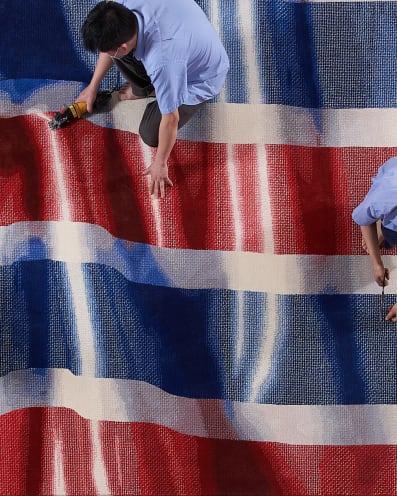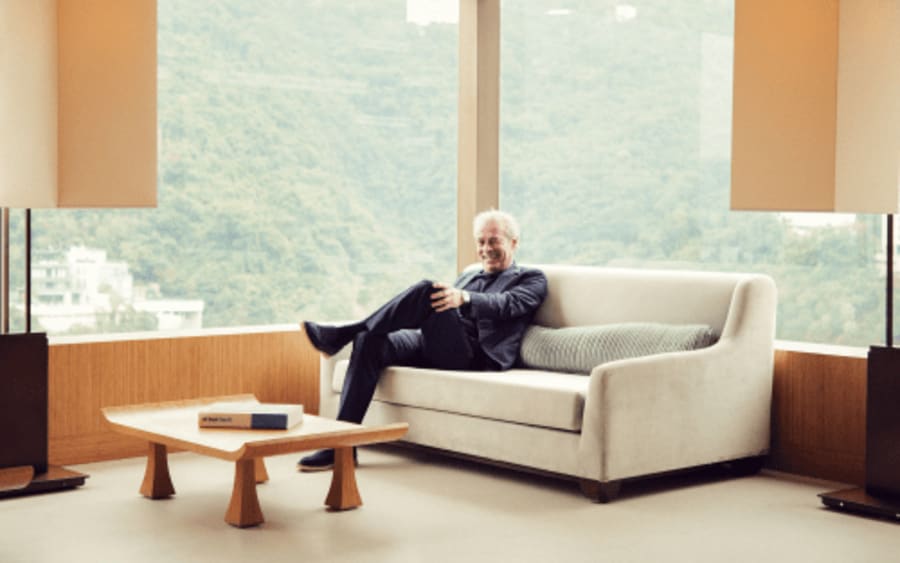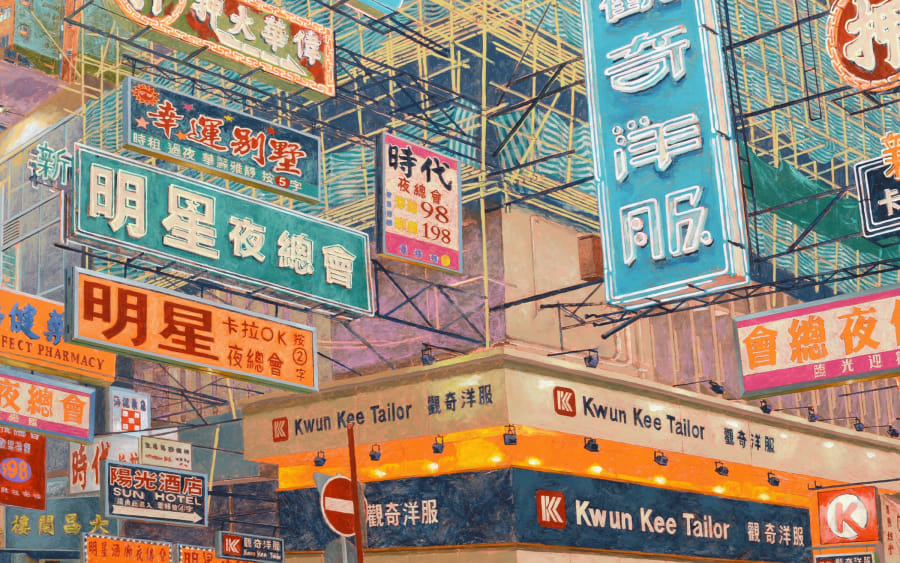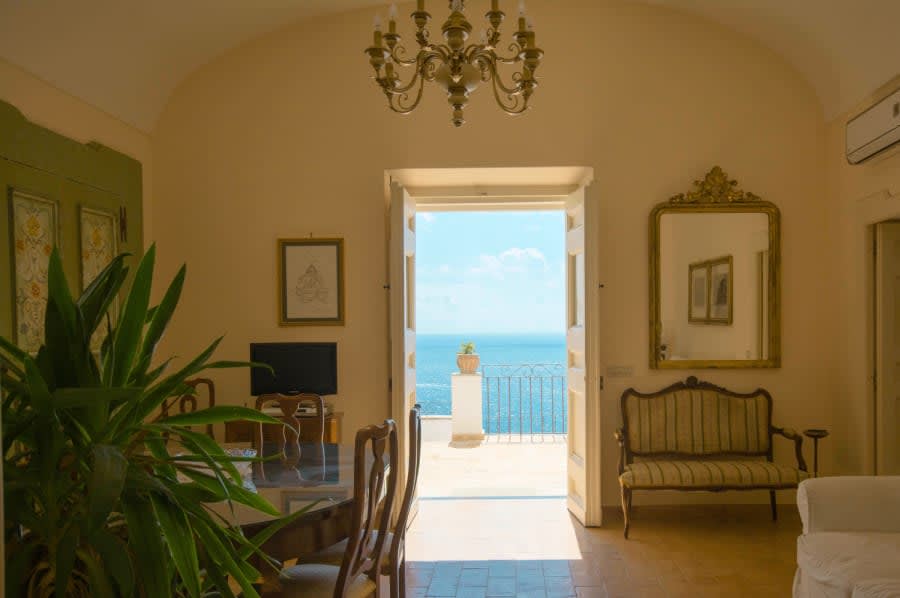
How Stanley Wong turned Hong Kong’s ubiquitous tarp into a symbol of resilience
In the artist’s collaboration with Tai Ping Carpets, the red-white-blue motif moves from local icon to universal emblem

How Stanley Wong turned Hong Kong’s ubiquitous tarp into a symbol of resilience
In the artist’s collaboration with Tai Ping Carpets, the red-white-blue motif moves from local icon to universal emblem

How Stanley Wong turned Hong Kong’s ubiquitous tarp into a symbol of resilience
In the artist’s collaboration with Tai Ping Carpets, the red-white-blue motif moves from local icon to universal emblem

How Stanley Wong turned Hong Kong’s ubiquitous tarp into a symbol of resilience
In the artist’s collaboration with Tai Ping Carpets, the red-white-blue motif moves from local icon to universal emblem

How Stanley Wong turned Hong Kong’s ubiquitous tarp into a symbol of resilience
In the artist’s collaboration with Tai Ping Carpets, the red-white-blue motif moves from local icon to universal emblem
By Elliat Albrecht
There’s a pattern that’s familiar to almost every Hong Konger. Not the unmistakable tick-tick-tick sound of the crosswalk signals, nor the wacky fabric on the public bus seats, but one that is similarly commonplace. It’s the red, white, and blue pattern printed on plastic tarps and bags across the city – a motif that, over the decades, has come to represent the spirit of the territory itself.
While the specifics of the tricolor material vary – sometimes it’s striped, sometimes it appears in plaid – it’s been impossible to miss for 60 years. Imported from Taiwan in the 1960s, the material, which was nylon at the time, was never meant to become anything symbolic. It was cheap and durable, so people began using it to make bags for carrying goods, as well as tarps for covering construction sites and waterproof shelters for market stalls. Its popularity skyrocketed and never waned. Without any orchestration, it became part of the texture of Hong Kong.
That ubiquity gave the pattern a new meaning and it became a visual shorthand for Hong Kong’s ethos of resilience, ingenuity, and industriousness. Today, it isn’t only used for practical purposes: It’s printed on souvenirs, home goods, and bags that are carried proudly as an indicator of hometown pride.
In 2022, the motif showed up on two large, handwoven rugs presented at Art Basel in Hong Kong. Suspended from bamboo scaffolding (another of the city’s vernacular materials), one rug, Hong Kong Walk On I, presented a photorealistic field of stripes disrupted by a ripple, while the other, Hong Kong Walk On II, pictured a stylized version of the city’s skyline in the three colors. The works were a collaboration between the legacy brand Tai Ping and Stanley Wong, an artist who has worked with the red-white-blue pattern since the 1990s. To achieve this, Tai Ping’s artisans abandoned computer-generated templates and worked entirely by hand, translating the plastic’s intricate weave and texture into wool with mural-like precision.
Hong Kongers at the fair recognized the motif instantly, snapping pictures. ‘People said they felt hugged by the installation,’ a Tai Ping representative recalls. Earlier this month, during Paris Design Week, Hong Kong Walk On I was on view for a new audience at Tai Ping’s Paris showroom.
Wong (also known as anothermountainman) was born in 1960, a decade of socioeconomic and cultural shifts for Hong Kong. He grew up alongside red-white-blue’s rise and the pattern was as ordinary as air. However, in the early 1990s, while on a trip to London, he spotted a bag made from the material in a fashionable Soho boutique. Back home it was cheap but in London it was chic. That dissonance made him see it in a new light: If a pattern could be coveted in one place and ignored in another, perhaps he’d overlooked something fundamental about what it meant to Hong Kong.
Wong had already cultivated a habit of carrying a camera with him to photograph street scenes. When he returned from London, he turned his lens on the red-white-blue pattern, beginning to see the tarps less as a material and more as a character participating in city life – tough, adaptable, and hardworking.
By the mid-1990s, as the handover of Hong Kong from British to Chinese control approached, the pattern acquired a new charge for him: It became something of a folk flag during difficult times. ‘People were nervous and insecure, losing confidence,’ Wong remembers. ‘The red-white-blue became my way to tell the story of a positive Hong Kong.’ He started to deconstruct and reimagine the motif in unexpected contexts, using it on posters, billboards, and lantern installations.
By the early 2000s, the artist had formally begun what became known as his ‘Red White Blue’ series, while he became known as Mr Red-White-Blue or the Father of Red-White-Blue. The works were so prominent on the local art scene that, in 2005, Wong was invited to represent Hong Kong at the Venice Biennale, where he installed an immersive teahouse lined with the tricolor pattern.
The tarp’s working-class roots resonated with Tai Ping’s own history. The company was founded in Hong Kong in 1956 as a way to provide jobs, especially for recent refugees from the Mainland. Over the years it evolved to become a carpet producer known for technical innovation and its collaborations with artisans and designers. For Wong, this origin story struck a chord. ‘The Kadoorie family started Tai Ping not to make money but to create work opportunities for poor people,’ he said. ‘That spirit of social value is important to me as an artist. It felt like luck that we came together.’
Luck, however, did not make the technical challenge of producing Hong Kong Walk On I any easier. In 2021, Wong handed Tai Ping a photo of rippled red-white-blue sheeting – the company’s artisans responded with a feat of translation. They divided the image into a grid of more than 71,000 sections, sketching out the details by hand. Using 628 color combinations of grade A New Zealand wool and Chinese silk yarns, they replicated the plastic’s crisscross texture, taking great care with highlights and shadows to produce a staggeringly photorealistic result. The rug took 12 months and 14 people to complete – a level of craftsmanship that ranks among Tai Ping’s most ambitious undertakings, demonstrating how far traditional techniques can be extended through collective skill and precision.
The ripple in the work’s pattern isn’t just for an intriguing trompe-l’oeil effect, it’s intentionally symbolic for Wong. At the time of the collaboration in 2021, Hong Kong was struggling with pandemic-related unknowns and another wave of social uncertainty. That the stripes are interrupted then resolved into a smooth field serves as a metaphor for endurance and recovery. ‘Life is never smooth – it’s sometimes rough, sometimes easy,’ Wong says. ‘I love my city, and my message is to encourage people to keep going, to walk on.’
Abroad, the red-white-blue may not have the same quotidian familiarity as it does for Hong Kong audiences, but Wong insists the message is universal. ‘I hope it sparks dialogue about human values,’ he says. ‘I want to share it to motivate people that, no matter what, we will always we go on.’ That dialogue is now unfolding on a global stage: After its debut in Hong Kong, Hong Kong Walk On traveled to Milan and most recently to Paris for its display at Design Week; it will next be shown in November at 3812 Gallery at The Whiteley in London. For Tai Ping – a company founded to preserve craft and provide livelihoods – the project underscores how a local material, reimagined through artistry and innovation, can resonate far beyond its origins, bridging art, craft, and cultural heritage.
Hong Kong Walk On, a collaboration between Tai Ping and the renowned Hong Kong cross-disciplinary artist anothermountainman (Stanley Wong), reimagines Wong’s iconic ‘Red White Blue’ series, a vibrant tribute to the city’s culture and identity. The piece masterfully recreates the illusion of rippled textile through exceptional hand-tufted techniques, using delicate gradations across 628 color combinations of wool and silk yarns, celebrating artistry, innovation, and craftsmanship.
Elliat Albrecht is a writer and editor based in Canada.
Caption for header image: Hong Kong Walk On I, Tai Ping workshop Xiamen, 2022. Photo credit: Su Pei Chen.
Published on September 29, 2025.



